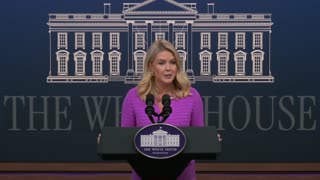Premium Only Content

Project Proposal for Microfinance Program.
Project Proposal for Microfinance Program.
Title: Empowering Communities through Microfinance: Building Sustainable Livelihoods:
01. Executive Summary.
02. Introduction and Background.
03. Objectives:
04. Program Components:
a. Microcredit Services.
b. Financial Education and Capacity Building.
c. Savings and Insurance Programs.
d. Mentorship and Networking.
5. Implementation Strategy:
a) Needs Assessment and Targeting.
b) Infrastructure and Technology.
c) Partnerships and Stakeholder Engagement.
d) Monitoring and Evaluation.
6. Expected Outcomes:
7. Sustainability and Expansion.
8. Budget.
1. Executive Summary: The proposed project aims to establish a microfinance program to uplift disadvantaged communities by providing access to financial services and fostering entrepreneurial activities.
2. Introduction and Background: Highlight the challenges faced by underserved communities in accessing formal financial services and the impact of financial exclusion on poverty levels and economic development. Discuss the potential of microfinance as a tool for poverty alleviation and economic empowerment. Present relevant statistics and studies supporting the need for a microfinance program in the target community.
3. Objectives:
• Facilitate access to financial services for low-income individuals and marginalized communities.
• Promote entrepreneurship and income-generating activities.
• Enhance financial literacy and management skills.
• Foster social and economic empowerment of women.
• Contribute to poverty reduction and sustainable development.
4.Program Component:
a) Microcredit Services: Establish a microcredit system to provide small loans to individuals and groups for starting or expanding income-generating activities. Develop appropriate loan products, interest rates, and repayment schedules tailored to the needs and capacities of the target beneficiaries. Implement a rigorous credit assessment and monitoring system to ensure loan repayment and minimize default risks.
b) Financial Education and Capacity Building: Organize training sessions and workshops on financial literacy, entrepreneurship, and basic business management skills. Empower beneficiaries with knowledge on budgeting, savings, investment, and financial planning. Collaborate with local educational institutions, NGOs, or experts to deliver comprehensive capacity-building programs.
c) Savings and Insurance Programs: Encourage a culture of savings among beneficiaries by establishing savings groups or savings accounts. Promote the benefits of savings for emergencies, future investments, and building assets. Explore partnerships with insurance providers to offer affordable insurance products covering health, life, and business risks to program participants.
d) Mentorship and Networking: Facilitate mentorship programs, connecting experienced entrepreneurs and professionals with aspiring individuals. Encourage networking among program participants to foster collaboration, knowledge-sharing, and peer support. Establish partnerships with local business associations, chambers of commerce, and community organizations to leverage their resources and expertise.
5. Implementation Strategy:
a) Needs Assessment and Targeting: Conduct a comprehensive needs assessment to identify the target communities, their specific needs, and their capacity to participate in the microfinance program.
b) Infrastructure and Technology: Invest in necessary infrastructure, such as physical offices, equipment, and technology systems, to efficiently manage the microfinance operations and provide quality services.
c) Partnerships and Stakeholder Engagement: Collaborate with local government authorities, financial institutions, NGOs, and community-based organizations to leverage their resources, expertise, and networks. Foster strong partnerships to ensure sustainability and scalability of the program.
d) Monitoring and Evaluation: Establish robust monitoring and evaluation mechanisms to assess the impact, effectiveness, and efficiency of the microfinance program.
6. Expected Outcomes:
• Increased access to financial services for underserved populations.
• Growth of microenterprises and income levels.
• Enhanced financial literacy and management skills.
• Improved social and economic empowerment, particularly for women.
• Poverty reduction and improved livelihoods within the target communities.
7. Sustainability and Expansion: Outline strategies to ensure the long-term sustainability of the microfinance program, such as financial self-sufficiency, revenue diversification, and capacity building of local stakeholders.
8. Budget: Provide a detailed budget estimate, including expenses for infrastructure, staffing, training programs, marketing, monitoring and evaluation, and operational costs.
9. Conclusion: Summarize the importance of implementing a microfinance program to address financial exclusion, poverty, and empower marginalized communities.
-
 46:41
46:41
The White House
3 hours agoPress Secretary Karoline Leavitt Briefs Members of the New Media, Apr. 29, 2025
49.5K18 -
 LIVE
LIVE
The Dana Show with Dana Loesch
2 hours agoWH BLASTS AMAZON OVER TARIFF COST DISPLAY | The Dana Show LIVE on Rumble! APRIL 29TH 2025
464 watching -
 LIVE
LIVE
NEWSMAX
5 hours agoThe Rob Carson Show LIVE (04/29/2025) | Call 1-800-922-6680 | NEWSMAX Podcasts
599 watching -
 1:03:24
1:03:24
Blockchain Basement
3 hours ago $0.25 earned🚨Arizona Bitcoin Reserve SIGNED! (Will Governor Strike IT DOWN?!)
17.3K2 -
 DVR
DVR
The Tom Renz Show
1 hour agoMAHA & Fighting Back With NHF
17.3K2 -
 1:02:12
1:02:12
TheAlecLaceShow
3 hours agoGuests: Rep. Brandon Gill & Joe Concha | Trump’s First 100 Days in Office | The Alec Lace Show
9.82K -
 1:18:15
1:18:15
The Rubin Report
4 hours agoPress Gasps When Told Trump’s Executive Order for Sanctuary Cities
78.8K79 -
 1:19:30
1:19:30
Flyover Conservatives
13 hours agoThe Future of AI: The Good, The Bad, The Ugly - Marc Beckman | FOC Show
21K -
 1:28:12
1:28:12
The Shannon Joy Show
4 hours ago🔥🔥Doctors Of Death. The Transformation Of America’s Health System Into A Death System Post COVID - With Special Guest Dr. Clayton Baker🔥🔥
21.1K3 -
 DVR
DVR
Bannons War Room
2 months agoWarRoom Live
14.6M3.96K